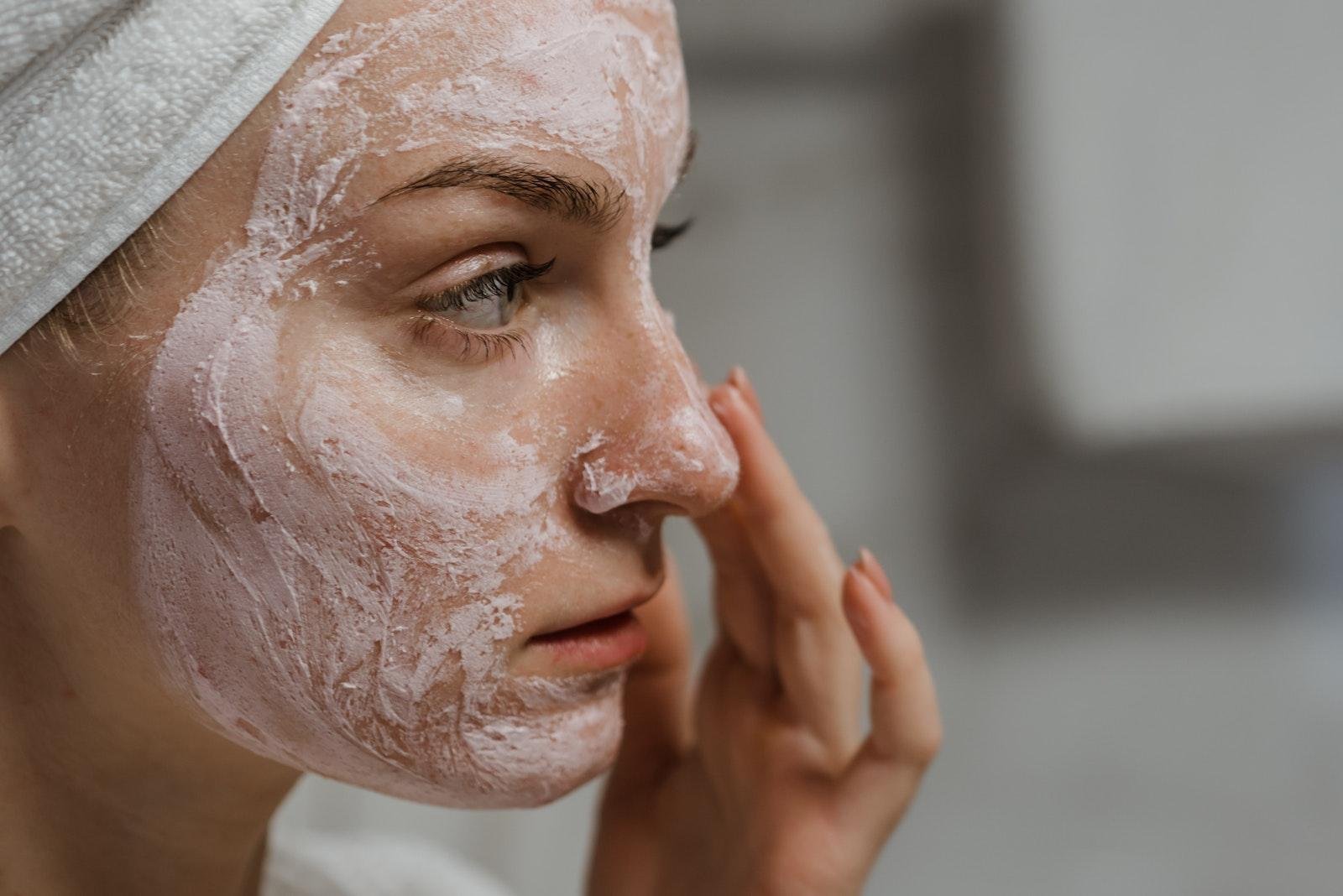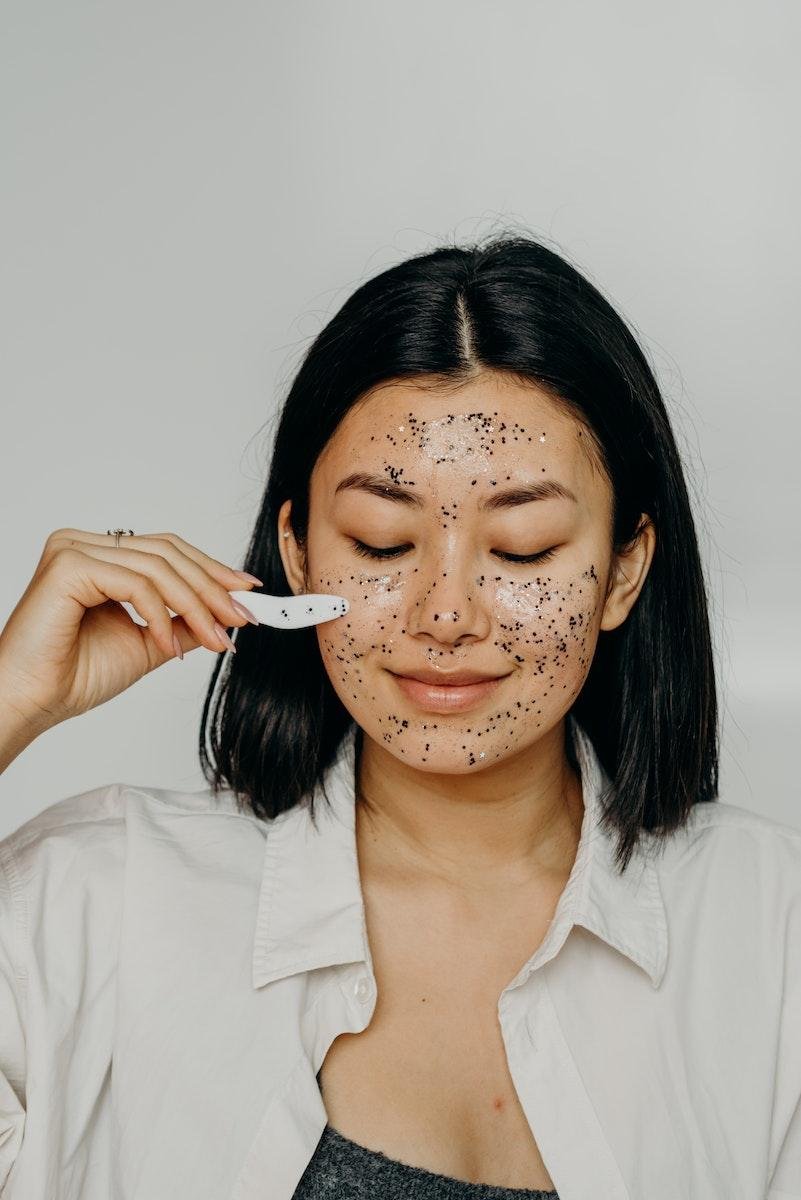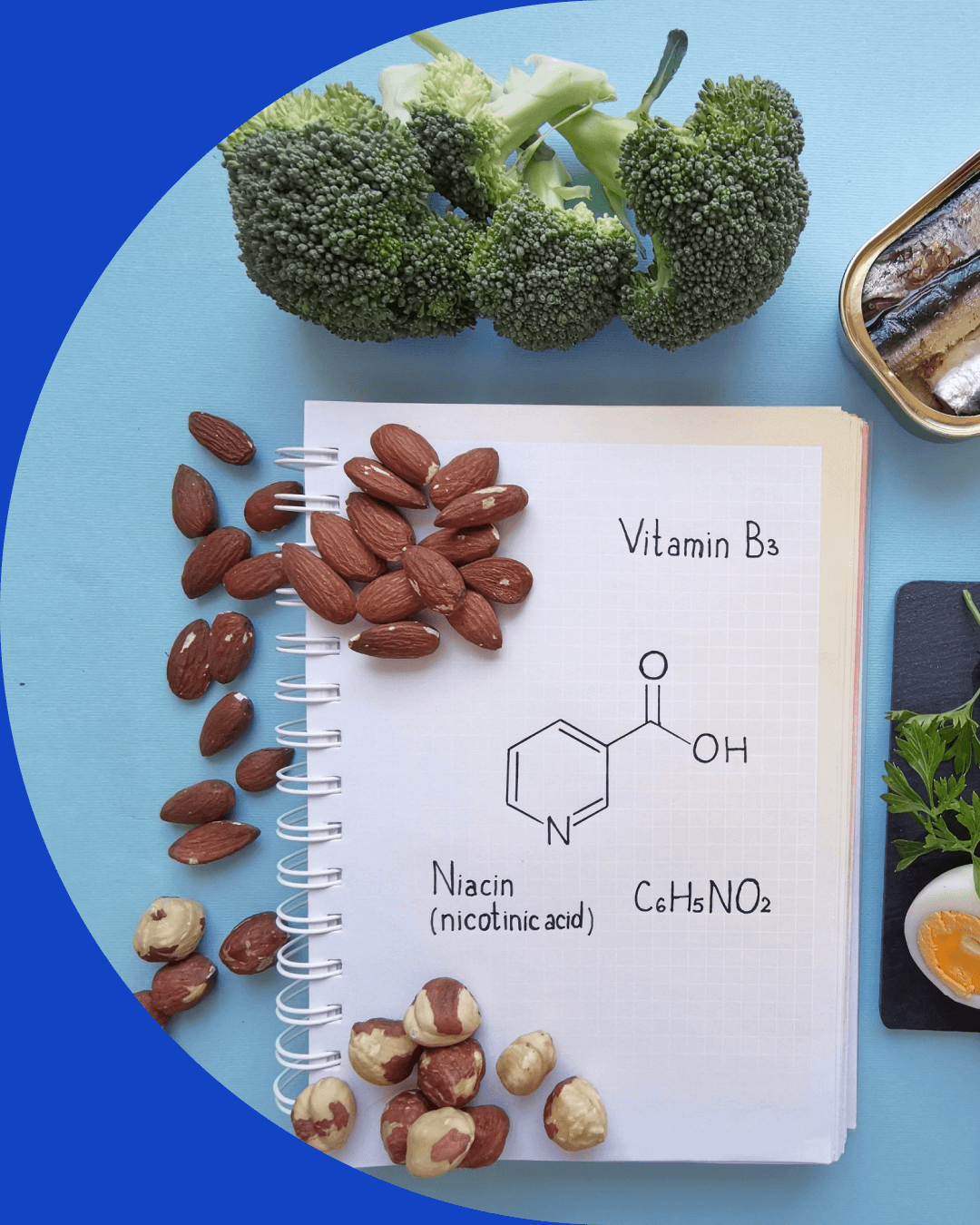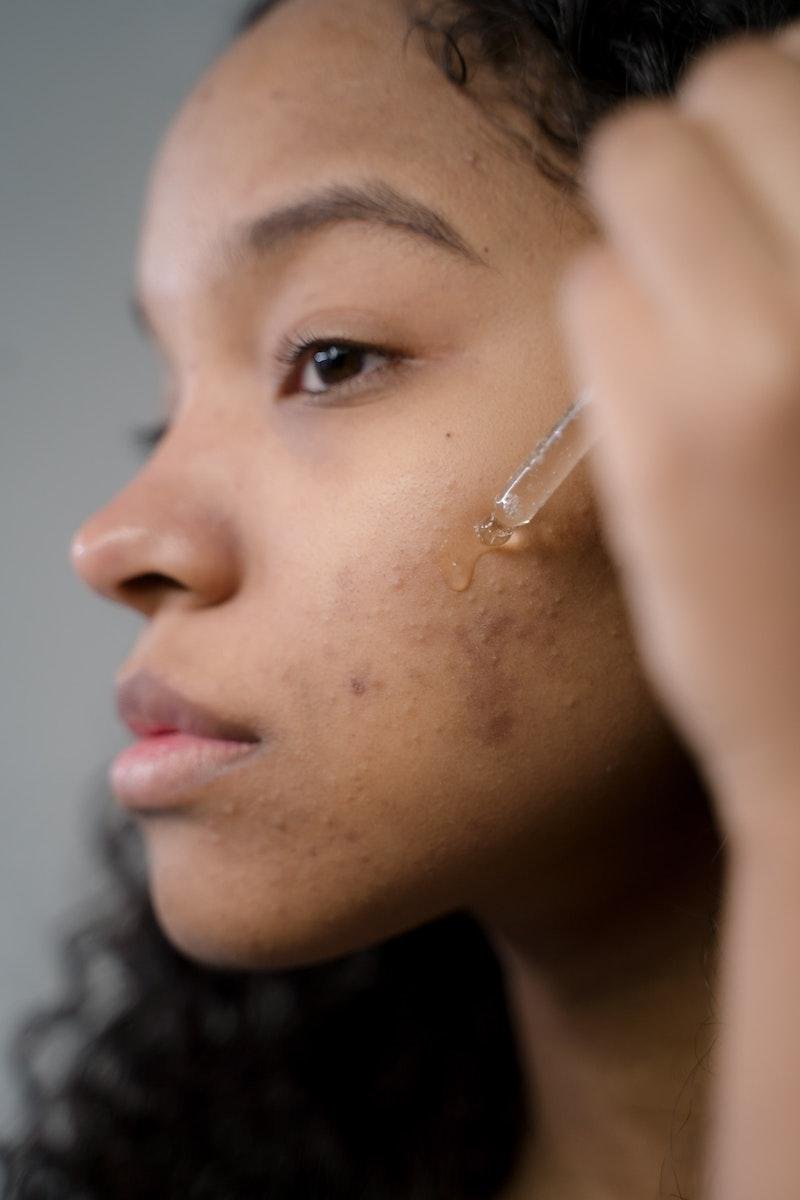Exfoliation is an essential step in many skincare routines, providing numerous benefits for the skin. By effectively eliminating dead skin cells from the surface of the face, exfoliation unveils a younger, softer, and smoother complexion. However, it’s important to approach exfoliation with caution, as aggressive or excessive methods can result in skin damage, irritation, and breakouts. Below, we explore different facial exfoliation techniques and go into the proper way to exfoliate your face, ensuring best results for soft, smooth, and healthy skin without any harm or discomfort.
What is Exfoliation?
Facial exfoliation is the process of removing dead skin cells and impurities from the surface of the face to reveal smoother, brighter skin. It involves using either physical or chemical methods to slough off the outermost layer of the skin, promoting cell turnover and improving the overall appearance and texture of the skin.
Some of the benefits of exfoliation include:
- Removing Dead Skin Cells: Exfoliation helps to slough off dead skin cells from the skin’s surface, promoting cell turnover. By removing the outermost layer of dead skin cells, exfoliation reveals fresher, smoother skin underneath.
- Improved Skin Texture: Regular exfoliation can help improve the overall texture of the skin. It smooths out rough patches, softens the skin, and reduces the appearance of uneven skin tone, bumps, and dryness.
- Enhanced Skin Radiance: Exfoliation helps to brighten the complexion by removing the dull, dead skin cells that can make the skin look lackluster. It promotes a more radiant and youthful appearance.
- Unclogged Pores: Exfoliation can help unclog pores by removing debris, excess sebum, and dead skin cells that can contribute to the development of acne, blackheads, and whiteheads. By keeping the pores clear, exfoliation can help prevent breakouts.
- Improved Product Absorption: By removing the barrier of dead skin cells, exfoliation allows skincare products, such as serums, moisturizers, and treatments, to penetrate more effectively into the skin. This enhances their absorption and effectiveness.
- Reduced Hyperpigmentation: Exfoliation can help fade hyperpigmentation and dark spots by promoting a more even distribution of melanin, the pigment responsible for skin coloration. Regular exfoliation can contribute to a more even skin tone and a reduction in the appearance of dark spots.
- Smoothed Fine Lines and Wrinkles: Regular exfoliation can improve the appearance of fine lines and wrinkles by promoting cell turnover and stimulating collagen production. This can lead to a smoother, plumper, and more youthful-looking complexion.
- Increased Blood Circulation: The massaging action involved in exfoliation stimulates blood circulation, bringing oxygen and nutrients to the skin cells. This can contribute to a healthy, glowing complexion.
What are the Different Types of Exfoliation?
Facial exfoliation can be classified into two main categories: physical (abrasive) and chemical. Physical exfoliation involves using tools or products to manually remove dead skin cells, while chemical exfoliation involves the use of acids or enzymes to dissolve and eliminate dead skin cells.
Below, we cover different types of physical and chemical exfoliants that can be used at home, as well as stronger, clinical-strength exfoliants that should be administered by licensed professionals.
Physical Exfoliation Methods
Face Scrubs
Facial scrubs are products that contain small granules or particles that provide a physical exfoliating action when massaged onto the skin. The granules can be made of various materials like sugar, salt, apricot kernels, jojoba beads, or finely ground nuts. Scrubs help to mechanically remove dead skin cells and impurities, revealing smoother skin.
Exfoliation Brushes
Facial brushes are designed with soft or silicone bristles that can be used to gently buff away dead skin cells. The brushes are typically used in a circular motion on damp skin. They provide a manual exfoliation while stimulating blood circulation and promoting cell turnover. Examples include manual face brushes, sonic brushes, and electric cleansing brushes.
Exfoliating Sponges
Exfoliating sponges are typically made of natural fibers, like konjac or loofah, and are used to gently scrub the skin. They can be used with or without a cleanser to slough off dead skin cells and improve skin texture.
Microdermabrasion
Microdermabrasion is a more intensive physical exfoliation method often performed in professional settings. It involves using a handheld device to spray fine crystals onto the skin and simultaneously vacuuming them away. This process mechanically exfoliates the skin and can help improve the appearance of fine lines, wrinkles, acne scars, and uneven skin tone.
Dermaplaning
Dermaplaning is a manual exfoliation technique performed by a skincare professional. It involves using a scalpel or a specialized tool to gently scrape off dead skin cells and fine facial hair (vellus hair) from the skin’s surface. This method can help to improve skin texture and promote a smoother, brighter complexion.
Chemical Exfoliation Methods
Alpha Hydroxy Acids (AHAs)
AHAs are water-soluble acids derived from fruits or milk sugars. Common examples include glycolic acid (derived from sugar cane), lactic acid (derived from milk), mandelic acid (derived from almonds), and malic acid (derived from apples). AHAs exfoliate the skin’s surface, improve skin texture, and address concerns like hyperpigmentation, fine lines, and dullness.
Beta Hydroxy Acids (BHAs)
BHAs are oil-soluble acids, with salicylic acid the most well-known and widely used. Salicylic acid is derived from willow bark and has the ability to penetrate into the pores, making it effective for addressing acne, blackheads, and oily skin. BHAs also have anti-inflammatory properties, making them suitable for sensitive and acne-prone skin.
Polyhydroxy Acids (PHAs)
PHAs are a newer generation of chemical exfoliants that are similar to AHAs but have larger molecular structures. PHAs, such as gluconolactone and lactobionic acid, provide gentle exfoliation while also moisturizing and hydrating the skin. They are suitable for sensitive skin types and can improve skin texture and skin barrier function.
Trichloroacetic Acids (TCAs)
TCA peels are medium-strength chemical peels used to improve skin texture, tone, and pigmentation. They penetrate deeper into the skin and stimulate collagen production. Professional application is highly encouraged, and precautions should be taken to minimize side effects.
Phenol Peels
Phenol peels are medical-grade deep chemical peels that penetrate the dermis and are used to address severe skin concerns. They provide significant results, such as improving deep wrinkles, sun damage, and acne scars. Professional application, anesthesia, and a longer recovery period are required, and they are not recommended for all skin types.
Enzymes
Enzymes, such as papain (derived from papaya) and bromelain (derived from pineapple), are natural exfoliants that work by breaking down and dissolving the proteins that hold dead skin cells together. Enzyme exfoliation is often considered gentler and is suitable for sensitive skin types.
Retinoids
While primarily known for their anti-aging and acne-fighting properties, retinoids can also promote exfoliation. They work by increasing cell turnover, revealing fresher skin. Retinoids are available in various strengths, including over-the-counter retinol and prescription-strength retinoids like tretinoin.
 Chemical Exfoliation vs Physical Exfoliation
Chemical Exfoliation vs Physical Exfoliation
Both chemical and physical exfoliation methods have their own advantages and disadvantages. Neither method is inherently superior to the other, and both provide benefits as long as they are used gently. By adopting a gentle exfoliation approach, individuals can enjoy the advantages of exfoliation regardless of the method chosen.
Below, we cover some of the advantages and disadvantages of chemical exfoliation vs physical exfoliation:
Chemical Exfoliation Pros and Cons
Chemical exfoliation involves using chemical substances, such as acids or enzymes, to dissolve and remove dead skin cells from the topmost layer of the skin.
The pros and cons of chemical exfoliation include:
Advantages of Chemical Exfoliation
- More even exfoliation: Chemical exfoliants offer a controlled and more uniform exfoliation, targeting dead skin cells without relying on physical scrubbing. They can effectively penetrate the skin and dissolve the bonds that hold dead skin cells together.
- Customizable for various skin types and concerns: Chemical exfoliants come in a range of formulations and strengths, making them suitable for different skin types and concerns, including acne, hyperpigmentation, and aging both at home and in a clinic.
- Addresses deeper skin layers: Chemical exfoliation can penetrate deeper into the skin, targeting not only the surface but also addressing clogged pores and promoting cell turnover in the deeper layers.
- Potential for long-lasting results: With consistent use, chemical exfoliation can promote collagen production, improve skin texture, reduce the appearance of fine lines, and create a more even skin tone.
Disadvantages of Chemical Exfoliation
- Potential for skin irritation: Some chemical exfoliants can cause skin irritation, especially if used improperly or in high concentrations. It is important to follow instructions and gradually introduce new chemical exfoliants into your skincare routine.
- Increased sensitivity to the sun: Chemical exfoliation can temporarily increase the skin’s sensitivity to sunlight. It is crucial to use sunscreen with at least SPF 30 and limit sun exposure while using chemical exfoliants.
- Gradual results: Unlike physical exfoliation, chemical exfoliation may not provide immediate results. It often takes time and consistent use to notice the full benefits and improvements in the skin’s texture and appearance.
- Potential for over-exfoliation: Using chemical exfoliants too frequently or in high concentrations can lead to over-exfoliation, which can cause skin irritation, dryness or dehydration, or compromise the skin barrier.
Physical Exfoliation Pros and Cons
Physical, or abrasive exfoliation, involves the use of a textured tool or product to manually lift and scrub away dead skin cells.
Some pros and cons to physical exfoliation include:
Advantages of Physical Exfoliation
- Immediate results: Physical exfoliation provides instant gratification by removing dead skin cells and leaving the skin feeling smoother and softer immediately after use.
- Control over pressure and intensity: With physical exfoliation, you have direct control over the pressure and intensity applied to your skin. You can adjust the pressure based on your comfort level and skin sensitivity.
- Enhanced circulation: The massaging action involved in physical exfoliation can help stimulate blood circulation, leading to a healthy and radiant complexion.
- Unclogging of pores: Physical exfoliation can help unclog pores by removing debris and excess sebum, which can contribute to the development of acne and blackheads.
Disadvantages of Physical Exfoliation
- Potential for irritation: Physical exfoliation, especially with harsh or abrasive scrubs, can potentially cause skin irritation, redness, or damage if not performed gently or if the product is too abrasive.
- Uneven exfoliation: Depending on the technique used, physical exfoliation may not provide uniform exfoliation. Certain areas may be over-exfoliated, while others may not receive sufficient exfoliation.
- Unsuitable for sensitive skin: Individuals with sensitive skin may find physical exfoliation too harsh and irritating, as it can exacerbate existing sensitivity or conditions such as rosacea or eczema.
- Risk of spreading bacteria: If the tools or products used for physical exfoliation are not properly sanitized, there is a risk of spreading bacteria, leading to potential skin infections or breakouts.
- Potential micro-tears in the skin: Certain abrasive scrubs, like those made with apricot or walnut, may contain sharp edges that can potentially cause micro-tears in the skin. These micro-tears can lead to skin damage and create openings through which bacteria can enter the skin.
- Clogged pores: Exfoliating beads in certain physical exfoliants can get stuck in pores, potentially causing clogged pores and skin issues. Thoroughly cleansing the skin after exfoliation and using exfoliating products with smaller, smoother beads can help prevent this.
How to Exfoliate Your Face the Right Way
When it comes to exfoliating your face, it’s important to strike a balance and avoid overdoing it. Exfoliation is a beneficial skincare practice, but excessive or aggressive exfoliation can lead to skin irritation, sensitivity, or damage. Remember, “less is more” when it comes to exfoliating the delicate skin on the face.
Here are some key do’s and don’ts to consider before attempting facial exfoliation:
The Do’s of Facial Exfoliation
Do choose the right exfoliation method: Consider your skin type and sensitivity when selecting a chemical or physical exfoliation method. Choose products and techniques that are suitable for your skin’s needs.
Do exfoliate gently: Whether using a scrub, brush, or chemical exfoliant, apply gentle pressure and avoid excessive scrubbing to prevent irritation or micro-tears on the skin.
Do follow instructions: Read and follow the instructions provided with the exfoliating product or consult with a skincare professional for proper usage and frequency recommendations.
Do exfoliate in moderation: Exfoliate no more than 2-3 times per week, or as recommended for your skin type. Over-exfoliating can lead to skin irritation, dryness, or sensitivity.
Do moisturize after exfoliation: After exfoliating, apply a gentle moisturizer to hydrate and nourish the skin. This helps restore moisture and maintain the skin’s barrier function.
Do treat your skin gently: Before and after exfoliation, use gentle, hydrating, and repairing products to soothe and calm the skin. Look for products with aloe vera, ceramides, and hyaluronic acid.
Do protect your skin: Apply sunscreen with a broad-spectrum SPF to protect your newly exfoliated skin from harmful UV rays. Exfoliation can increase skin sensitivity, making it more susceptible to sun damage.
Do consider professional exfoliation: If you’re unsure about at-home exfoliation, or are looking for stronger results, always consult a dermatologist or other licensed professional for in-clinic exfoliation.
The Don’ts of Facial Exfoliation
Don’t overdo it: Avoid excessive exfoliation, as it can disrupt the skin’s natural balance, cause dryness, or lead to inflammation. Listen to your skin and adjust the frequency as needed but remember – less is more.
Don’t use harsh scrubs or excessive force: Avoid using abrasive scrubs with sharp particles that can cause micro-tears in the skin. Similarly, don’t apply excessive force or pressure during physical exfoliation.
Don’t exfoliate irritated or broken skin: If you have active acne, cuts, sunburn, or any skin condition that causes irritation or open wounds, avoid exfoliating those areas until they have healed.
Don’t exfoliate delicate skin: To prevent any potential skin damage, avoid excessive exfoliation on the most delicate parts of your face, especially around the eyes, nose, and mouth. These areas are particularly sensitive and require gentle care.
Don’t combine multiple exfoliating products: Using multiple exfoliating products simultaneously can be too harsh for the skin. Avoid combining chemical exfoliants or using them in conjunction with physical exfoliation in the same session.
Don’t use too many actives at once: Treat your skin gently in the days surrounding exfoliation. Avoid using harsh ingredients such as retinoids, vitamin C, benzoyl peroxide, or other strong compounds concurrently with your exfoliation routine. Use them on different days, with a period of time to allow your skin to heal in between.
Don’t neglect your skin type and sensitivity: Different skin types have varying tolerance levels for exfoliation. Take into account your skin’s specific needs and adjust the exfoliation method accordingly.
Don’t ignore signs of irritation: If you experience persistent redness, itching, or any adverse reactions after exfoliation, discontinue use and consult with a dermatologist or skincare professional.




